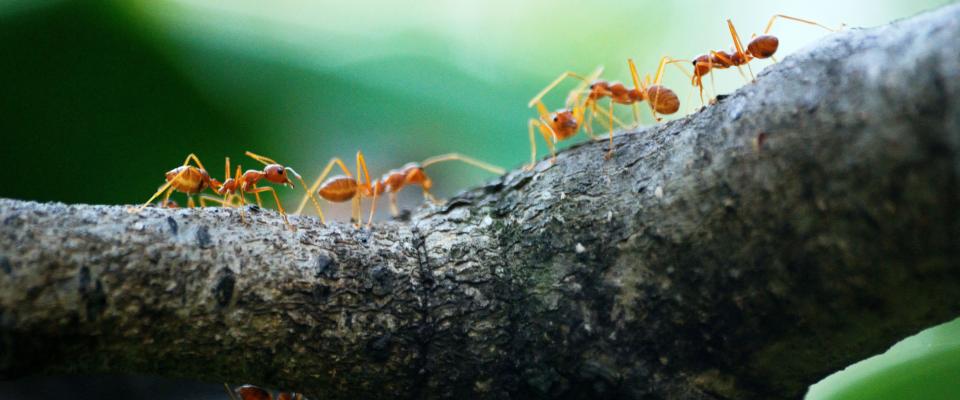Researchers re-create chemicals that cause ants to attack each other
California residents are no doubt familiar with those little dark-brown ants that flood indoors when it rains and during droughts, scavenging for crumbs or whatever moisture they can glean from kitchen sinks and countertops. These are Argentine ants, a highly invasive pest that is disrupting California’s ecology. Recently, Berkeley researchers Ellen van Wilgenburg, Miriam Brandt, and Neil Tsutsui, and two chemists from UC Irvine, isolated specific chemicals, called hydrocarbons, that act as cues that allow the insects to distinguish friend from foe, a key step toward regulating the Argentine ant population.
Native to South America, Argentine ants are successful invaders in many parts of the world, from Australia to the Mediterranean to parts of the United States, forming giant supercolonies that can extend thousands of kilometers. In their native range, colonies are relatively small and are genetically, and so chemically, distinct. Those chemicals exude different odors that allow ants to identify each other as colony mates or as enemies that should be attacked.
But according to Tsutsui, “Argentine ants have gone through a genetic bottleneck so they’ve come out here in the introduced range all very genetically homogeneous. So they all smell the same. They all think that they’re members of the same colony.” Instead of fighting each other, Argentine ants across California focus all their resources on colony growth—bad news for native species. “They overwhelm the other species just by sheer numbers,” Tsutsui explains. This is a problem for many reasons: In Berkeley, about 15 to 20 native ant species are doing all kinds of work for the woodland habitat—some are dispersing seeds, some are turning soil, some are important prey for other animals. “Argentine ants come in,” Tsutsui says, “and they eliminate all those native species. So they remove all those functions that those native species provide for the ecosystem.” Argentine ants also work symbiotically with aphids, among the most destructive plant parasites, protecting them from predators in order to feed off the aphid’s honeydew, causing big problems for California agriculture.
Tsutsui and his fellow researchers analyzed a hundred or so hydrocarbons that occur on the ants’ exoskeletons in both native and introduced ranges, and have synthesized seven that they’ve found to covary with aggression. By applying the synthesized hydrocarbons to ants, the researchers are able to trick colony mates into attacking one of their own. While Tsutsui admits that field tests are still a ways off, this could prove to be a useful, colony-specific method for population control.




















